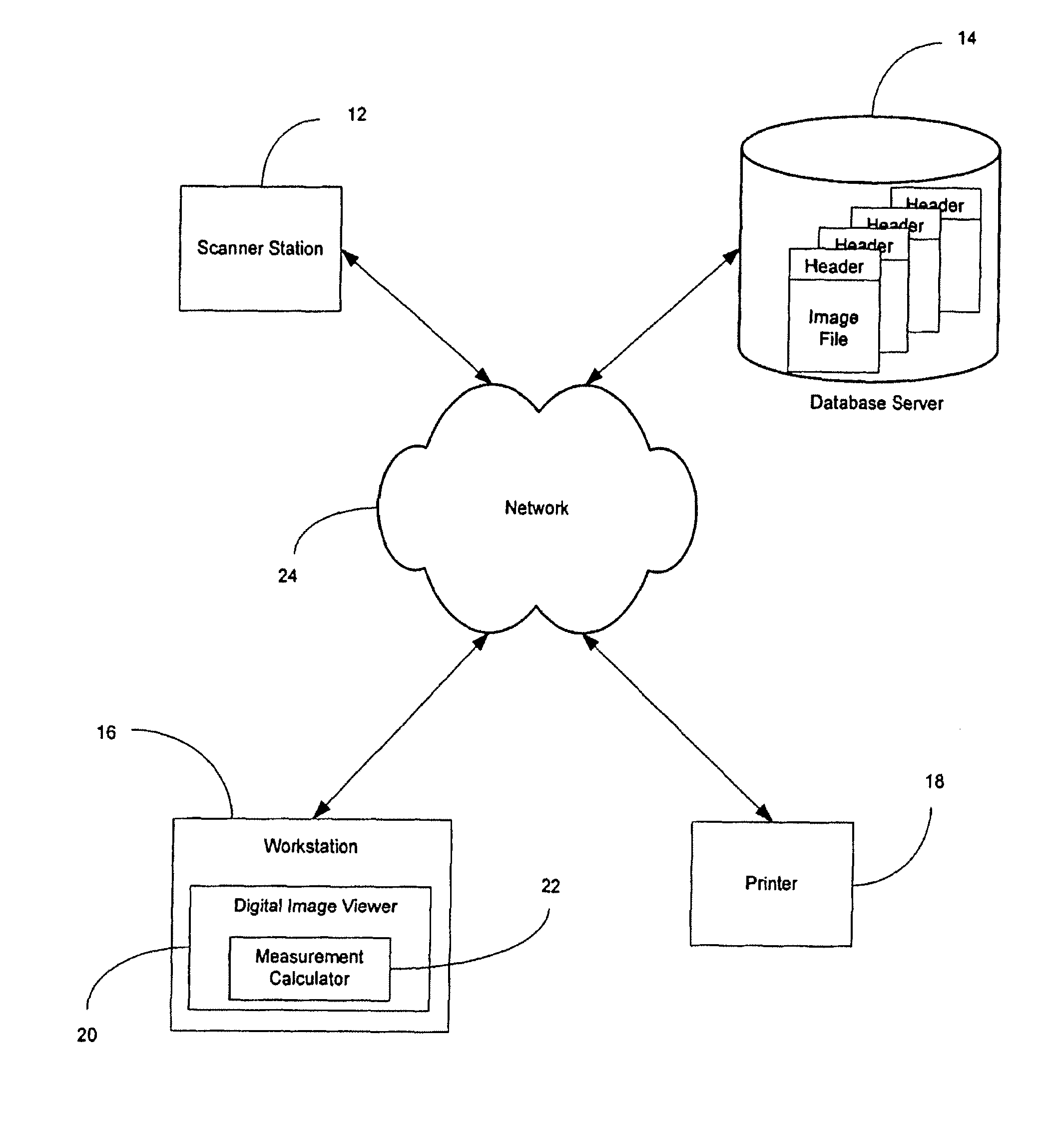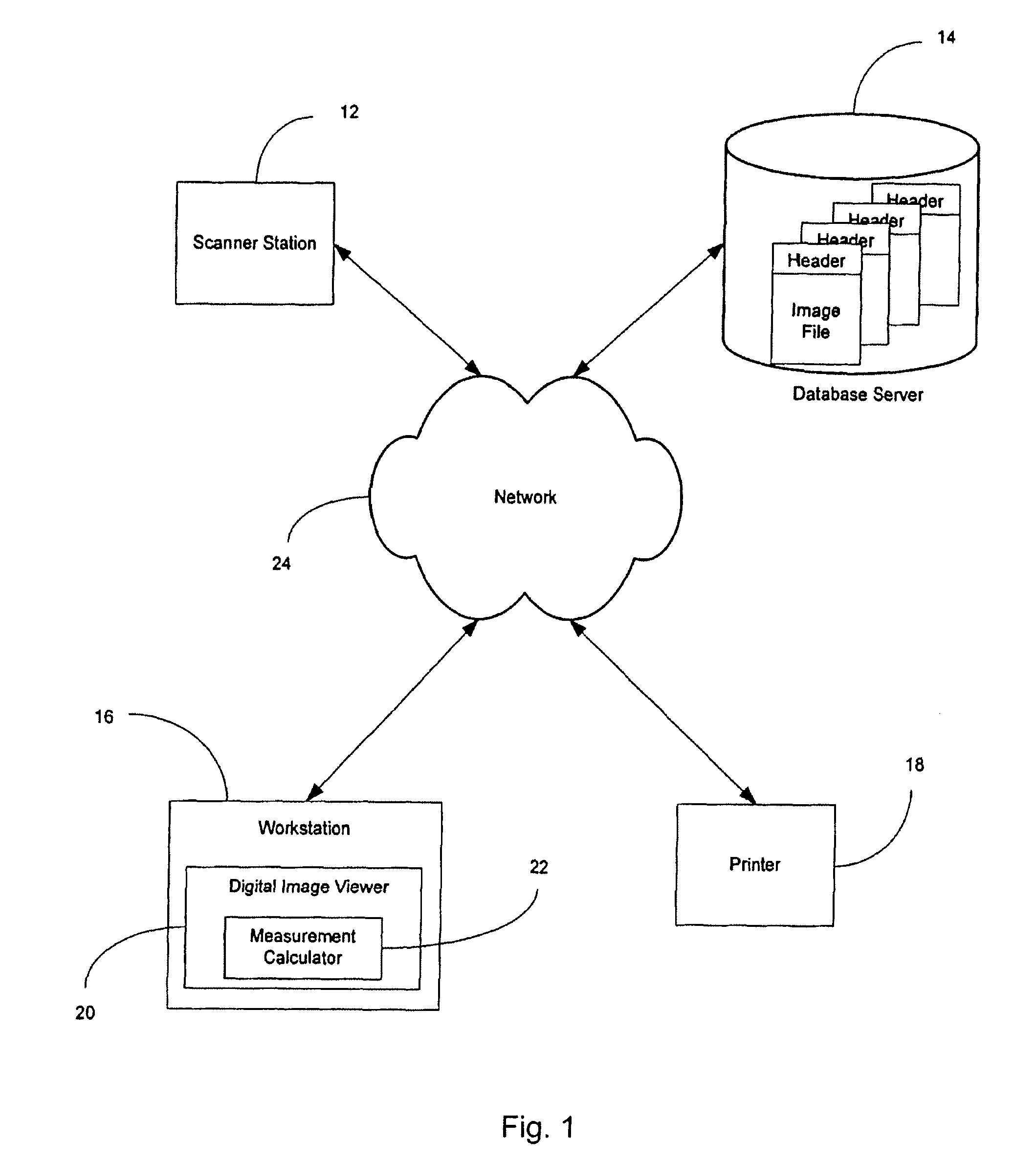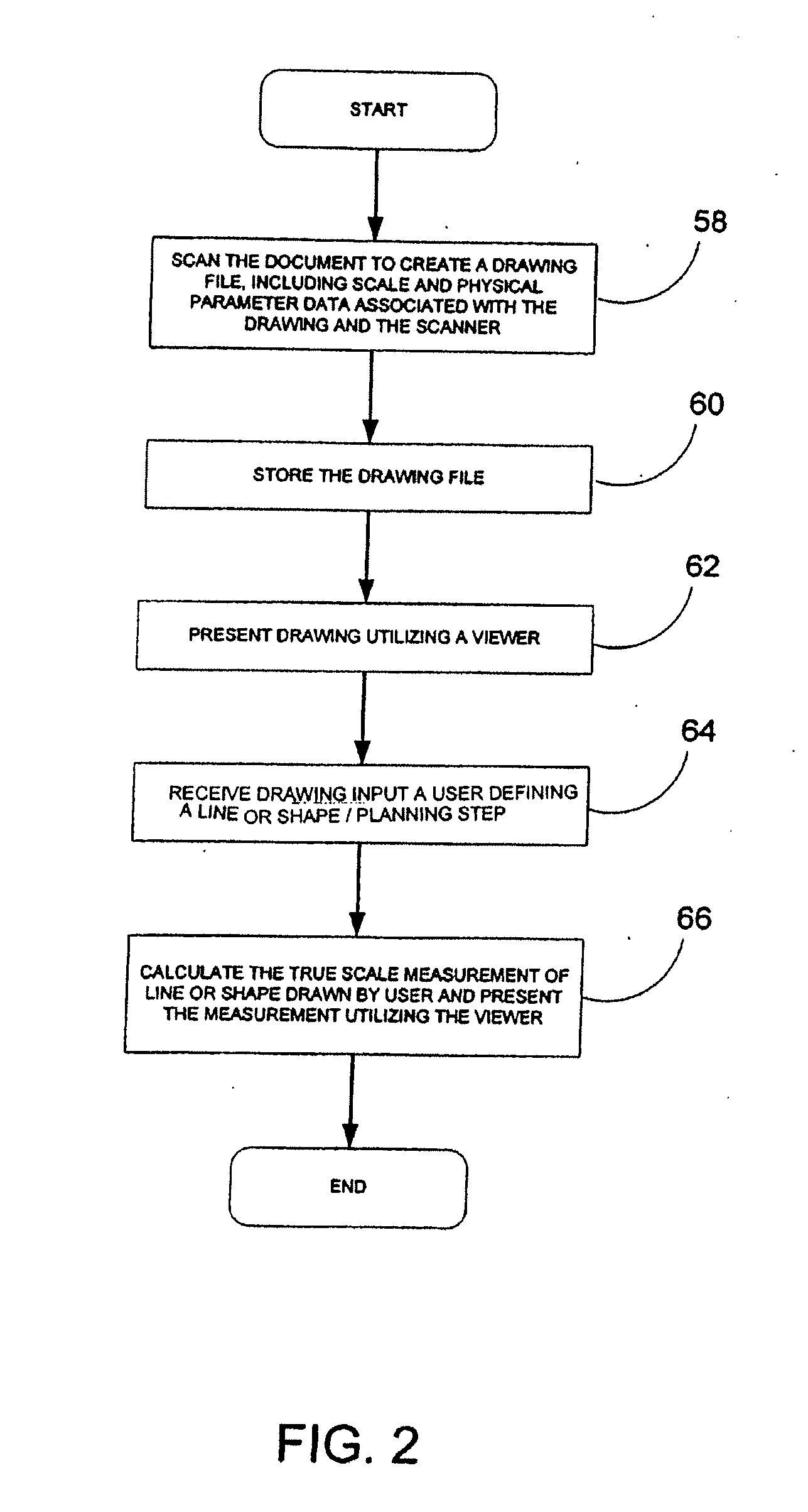System and method for simultaneously viewing, coordinating, manipulating and interpreting three-dimensional and two-dimensional digital images of structures for providing true scale measurements and permitting rapid emergency information distribution
a technology of digital images and structures, applied in the field of digital images, can solve the problems that the public tiff header tags for file size cannot be used to store other data such as description data or scale data
- Summary
- Abstract
- Description
- Claims
- Application Information
AI Technical Summary
Benefits of technology
Problems solved by technology
Method used
Image
Examples
example
[0186]The present invention may be described using the below non-limiting example.
[0187]A fire is reported burning on the third floor of a four-story structure. The emergency responders uses a laptop 28a to access the floor plan data of the burning building either on-site or on route to the building. Once the floor is located, the emergency responder can open the desired digital images using the display / viewer 240 and manipulate the data in several different ways all of which can occur simultaneously.
[0188]The user can identify all entry and exit points for the structure using the 2D window 244 in the digital image display / viewer 240 and the select the Find Shortest Path Tool to determine the shortest and fastest path from one point on the floor to an exit point. Once the path has been calculated and visually plotted in both the 3D and 2D windows 242, 244 the user can place the 3D window camera to the preferred structural entry point or their current position in the building and vie...
PUM
 Login to View More
Login to View More Abstract
Description
Claims
Application Information
 Login to View More
Login to View More - R&D
- Intellectual Property
- Life Sciences
- Materials
- Tech Scout
- Unparalleled Data Quality
- Higher Quality Content
- 60% Fewer Hallucinations
Browse by: Latest US Patents, China's latest patents, Technical Efficacy Thesaurus, Application Domain, Technology Topic, Popular Technical Reports.
© 2025 PatSnap. All rights reserved.Legal|Privacy policy|Modern Slavery Act Transparency Statement|Sitemap|About US| Contact US: help@patsnap.com



